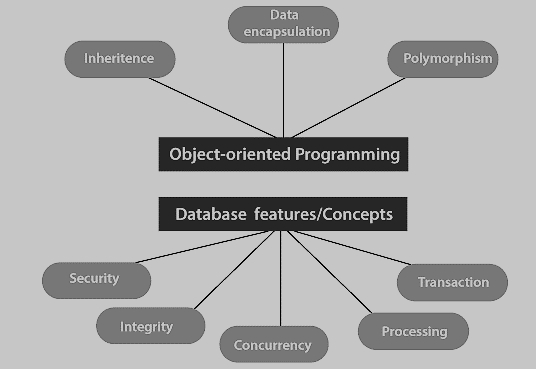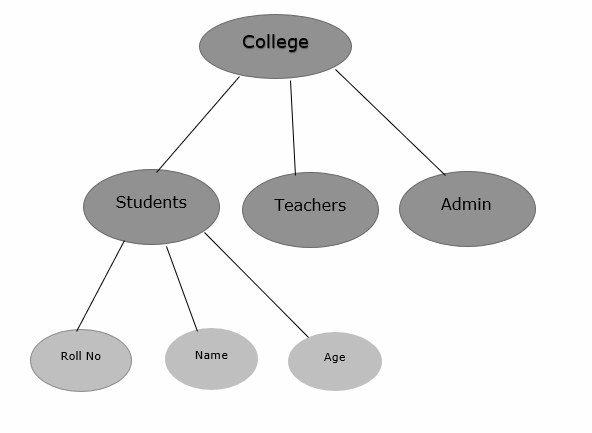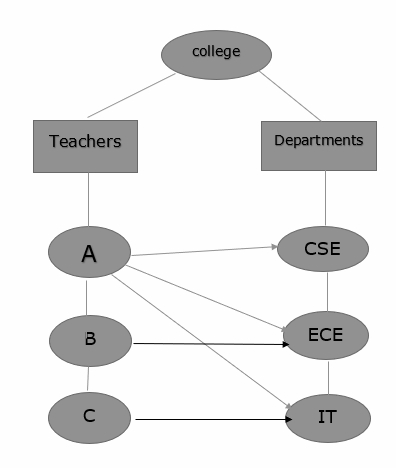Database Management System
Introduction
Data and database technology are having a major impact on growing use of the computers. The database plays a critical role in the almost a ll areas where computers are used in education, business, engineering,law,medicines and science and technology .
A database management system (DBMS) is a collection of programs that enables users to create and maintain a database. The objective of DBMS is to provide a convenient and effective method for defining,storing, or constructing, and retriving or manipulating databases for various applications.
Block diagram showing DBMS, database, and their connection.
Use of DBMS:
* Storing data.
*Accessing data when it is required.
*Updating/modifying data.
*Deleting or removing data.
*Reducing data redundancy.
Terms in DBMS:
Data: Data is a raw fact or figure which do not have meaningful fact.Data can be manipulated to produce output.Data are the raw facts from which we start to get information. Example:1,Ram,Kathamndu.
Database: It is the systematic collection of data. It is a computer-file system that uses a particular file organization to facilitate rapid updating of individuals records, simulaneous updating of related records, easy access to all records , by all application programs. Example: Banking record of the customers, result sheet payroll sheet and product record of the shopping center.
Information: It is the processed data i.e. organized data.
Database Management System: It is a software packaged used to design, manipulate, define , retrive , delete , modify database in records.
Differents software of DBMS: oracle and Mysql are presently used widely.
Advantages & disadvantages of DBMS:
Some of the advantages are given below:
* Data sharing : Data stored in database can be shared. It can be shared among the several different users or concurrent access by different users.
*Reduce data redundancy: In traditional file processing, the same data may be duplicated at any times or places, is called data reduncncy. A DBMS reduces the duplication of the data from a database.
*Integrity can be maintained: Integrity ensures that the data stored in a database is correct or accurate.
*Providing backup & recovery: A DBMS must provide facilities for recovering from hardware and software failures.
*Security can be improved: In DBMS, certain restriction can be applied for security by giving different authority to different users.
Disadvantages of DBMS:
*It is complex to understand and implement .
*Only trained and skilled staff can work properly in database system.
*Initial investment is high for implementing hardware, software and training.
* When some fault occures in one part of the database, it affects the other parts as well.
Types of DBMS
The types of DBMS based on data model are as follows −
* Relational database.
*Object oriented database.
* Hierarchical database.
* Network database.
Relation Database
A relational database management system (RDBMS) is a system where data is organized in two-dimensional tables using rows and columns.
This is one of the most popular data models which is used in industries. It is based on SQL.
Every table in a database has a key field which uniquely identifies each record.
This type of system is the most widely used DBMS.
Relational database management system software is available for personal computers, workstation and large mainframe systems.
For example − Oracle Database, MySQL, Microsoft SQL Server etc.
Std ID Name City 201 Ram Damak 204 Lucky KTM 205 Shyam Morang
In the above student table Std ID, Name and city are called as attributes and their values. Std ID is a primary key attribute which uniquely identifies each record in the student table.
A relational database management system (RDBMS) is a system where data is organized in two-dimensional tables using rows and columns.
This is one of the most popular data models which is used in industries. It is based on SQL.
Every table in a database has a key field which uniquely identifies each record.
This type of system is the most widely used DBMS.
Relational database management system software is available for personal computers, workstation and large mainframe systems.
For example − Oracle Database, MySQL, Microsoft SQL Server etc.
| Std ID | Name | City |
|---|---|---|
| 201 | Ram | Damak |
| 204 | Lucky | KTM |
| 205 | Shyam | Morang |
In the above student table Std ID, Name and city are called as attributes and their values. Std ID is a primary key attribute which uniquely identifies each record in the student table.
Object Oriented Database
It is a system where information or data is represented in the form of objects which is used in object-oriented programming.
* It is a combination of relational database concepts and object-oriented principles.
Relational database concepts are concurrency control, transactions, etc.
* OOPs principles are data encapsulation, inheritance, and polymorphism.
* It requires less code and is easy to maintain.
For example − Object DB software.
The object oriented database is represented in diagram format below :
Hierarchical Database
It is a system where the data elements have a one to many relationship (1: N). Here data is organized like a tree which is similar to a folder structure in your computer system.
The hierarchy starts from the root node, connecting all the child nodes to the parent node.
It is used in industry on mainframe platforms.
For example− IMS(IBM), Windows registry (Microsoft).
An example of a hierarchical database is given below −
Network database
A Network database management system is a system where the data elements maintain one to one relationship (1: 1) or many to many relationship (N: N).
It also has a hierarchical structure, but the data is organized like a graph and it is allowed to have more than one parent for one child record.
Example
Teachers can teach in multiple departments. This is shown below −







Hope this might help youu.
ReplyDelete